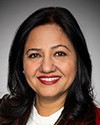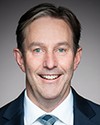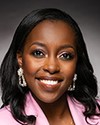I'm proud to say, as a Canadian, that some of our researchers are among the world leaders on this issue. I mentioned specifically the work that's being done at CAMH, looking at radio tracers and PET scans to be able to diagnose chronic traumatic encephalopathy in vivo, which is game-changing when thinking about people who are potentially affected by that disease. It's not just athletes, but also military personnel and survivors of accidents and violence. This is important research for all those different folks affected by brain injury.
I was able to tour Dr. Beauchamp's lab a couple of months ago. Some of the work that she's doing with the pediatric population, again, is world-leading in terms of how we think about that.
There's the work at the Canadian Concussion Centre, which is part of our global brain bank, where they're doing autopsies and looking at CTE. Again, they're leading the world in this.
That being said, I will advocate on behalf of our researchers. These folks are doing a lot with a little bit, especially within the context of our neighbours to the south. We work very closely with our U.S. chapter. Obviously, they're dealing with much more resources. However, I'm very proud to say that Canada is absolutely a huge contributor on a global level, and this research is absolutely applicable not just to athletes, but to anybody who's exposed to brain injury and repeated head impacts.






